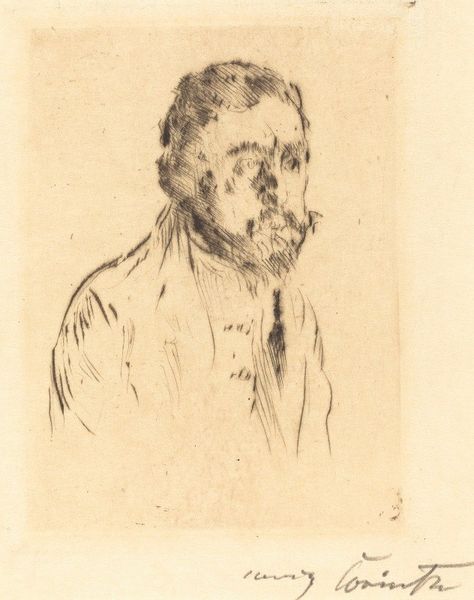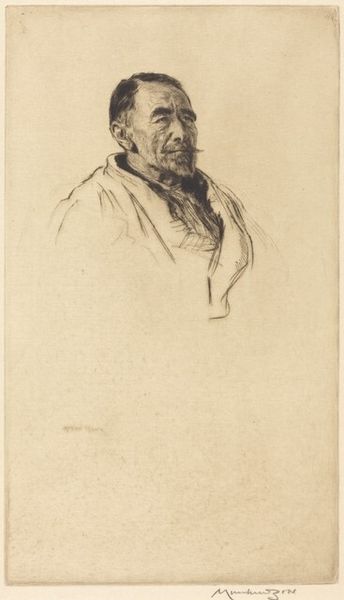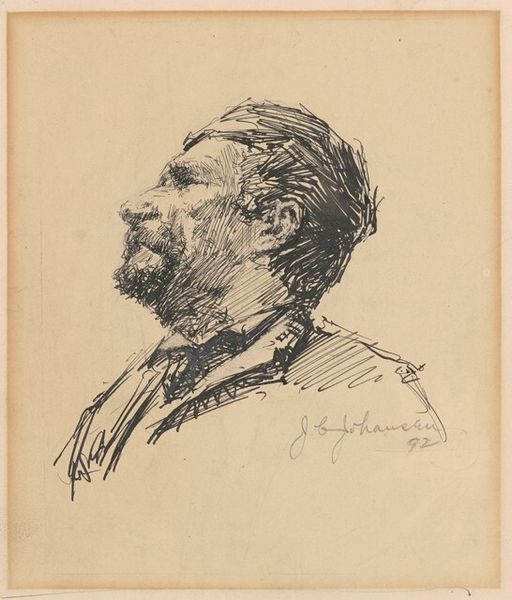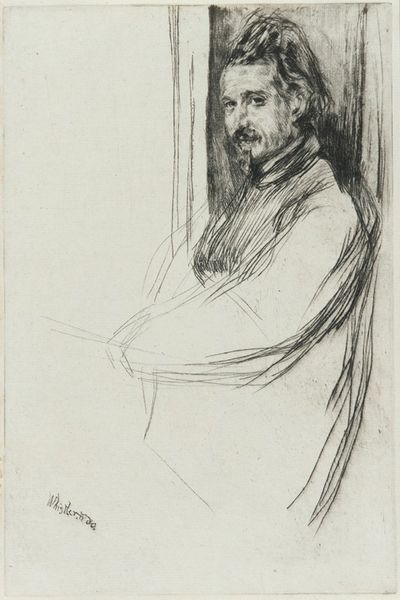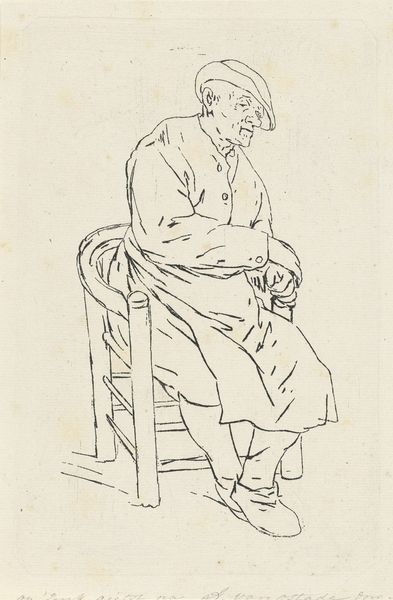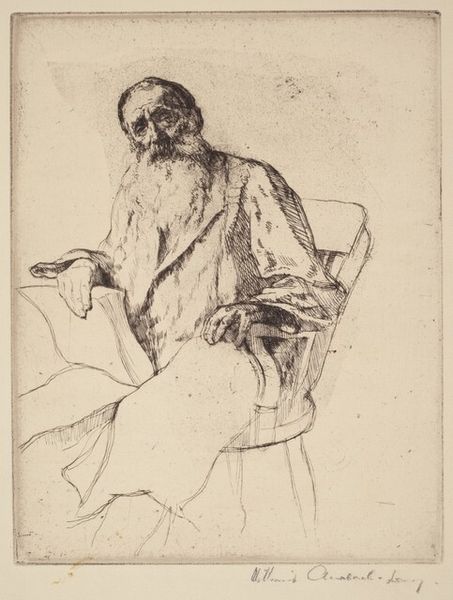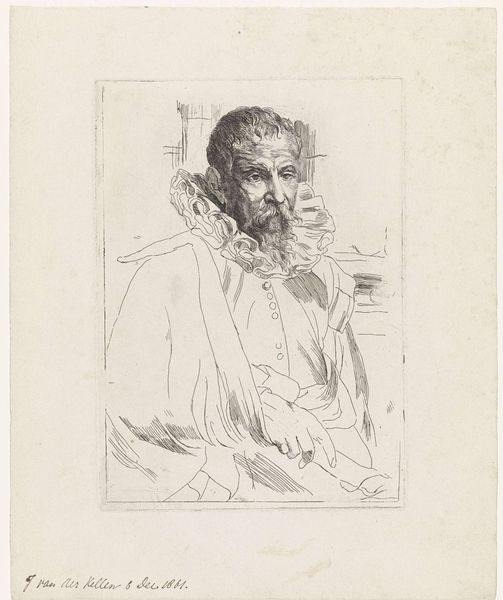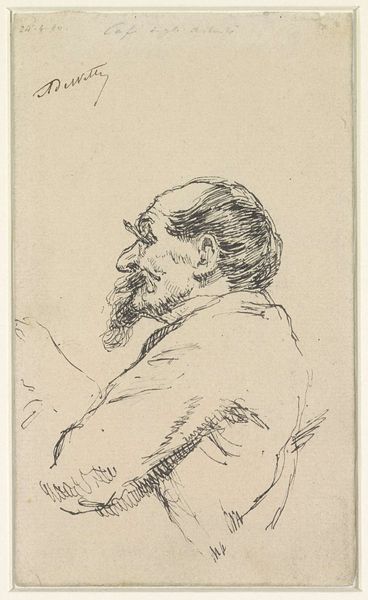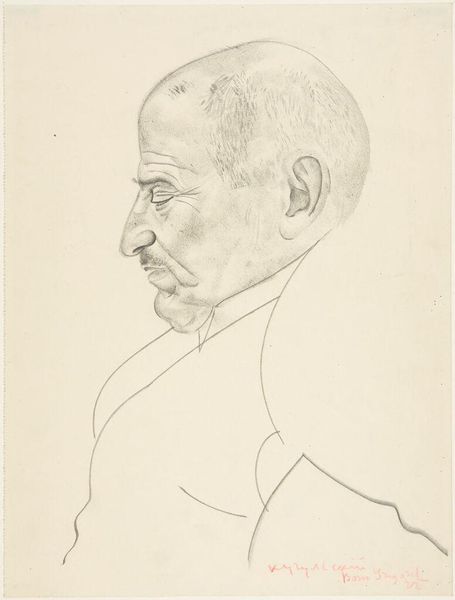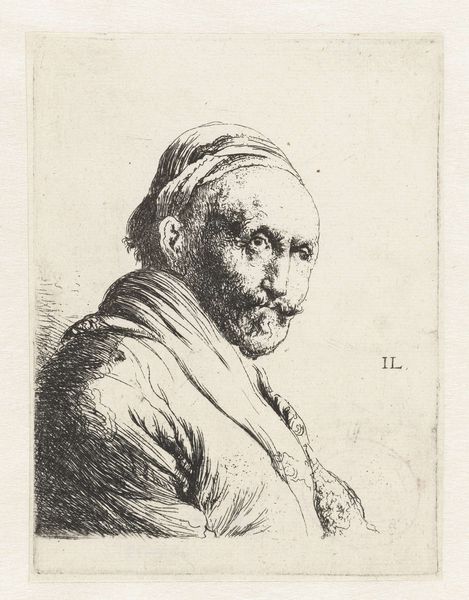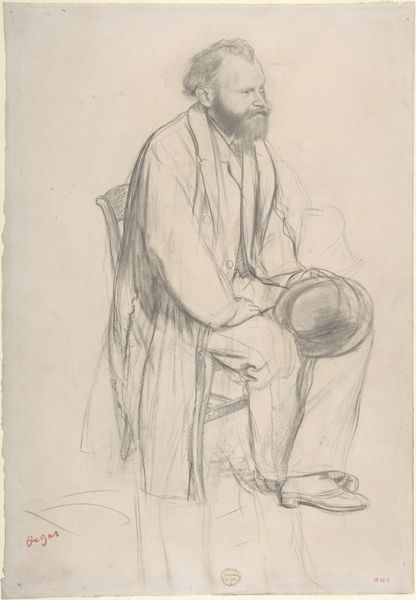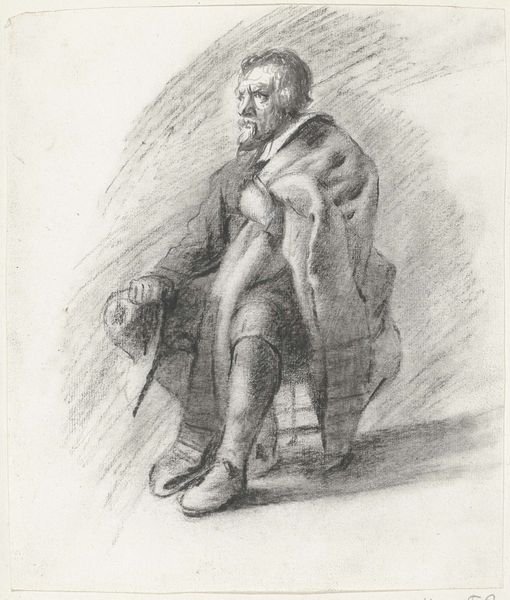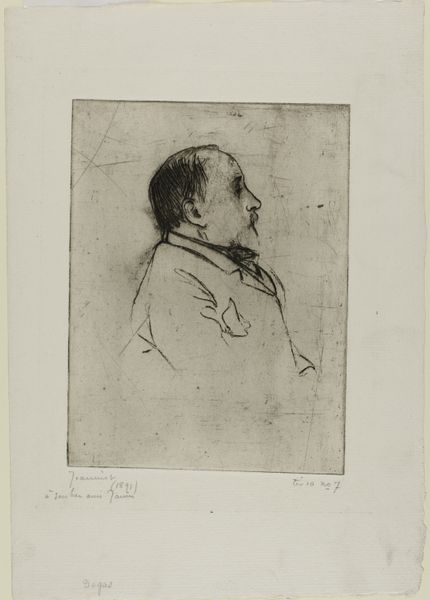
print, engraving
#
portrait
# print
#
figuration
#
line
#
portrait drawing
#
engraving
Copyright: National Gallery of Art: CC0 1.0
Editor: Here we have Muirhead Bone’s “Joseph Conrad Listening to Music,” made between 1923 and 1925. It’s an engraving, giving it this incredibly delicate, almost ephemeral quality. I'm really struck by how pensive and weary Conrad appears. What are your initial thoughts on this piece? Curator: It's fascinating to see Conrad, the great novelist of the sea, depicted not in action or adventure, but in quiet contemplation. The title directs us, specifically, to his act of ‘listening’, perhaps inviting us to consider the role of sound and its representation. In the 1920s, portraiture wasn't simply about capturing likeness. It was often deployed as a marker of cultural significance. Think about it: who gets their portrait made, and why? Editor: So you're suggesting the very act of commissioning Bone to create this print elevates Conrad’s status? Curator: Precisely. Furthermore, prints, unlike unique paintings, are designed for dissemination. This speaks to the public role of the artist and the deliberate attempt to cement Conrad’s image in the cultural landscape. Consider also the style: The emphasis on line, rather than tone, moves this away from idealized or flattering portraits toward a modern depiction rooted in realism and perhaps even fragility. What do you notice about Bone's linework? Editor: It’s economical, for sure. He uses just enough lines to suggest form, especially in Conrad’s face. You see the weight of experience there. Curator: And that careful editing is key. By stripping away excess detail, Bone focuses our attention on the psychological interiority of Conrad. The print asks us to consider Conrad as a thoughtful, complex figure deeply connected to the socio-political shifts of his time. It highlights a public image carefully curated through art. Editor: That's fascinating. I had considered it just a portrait, but you've shown how it participates in building and broadcasting Conrad’s public image. Thanks! Curator: It’s a great example of how even seemingly simple portraits can tell complex stories about culture, status, and artistic intention.
Comments
No comments
Be the first to comment and join the conversation on the ultimate creative platform.
